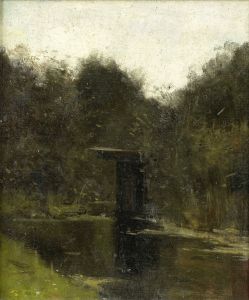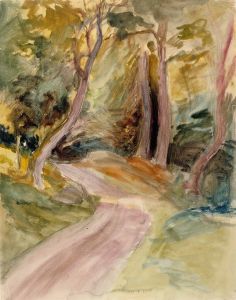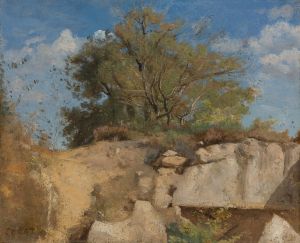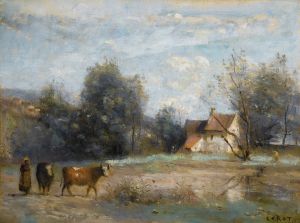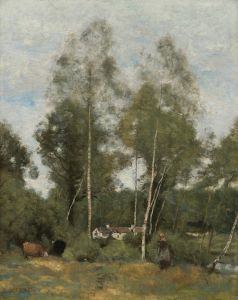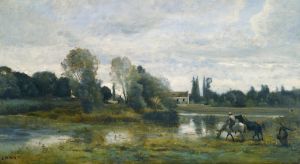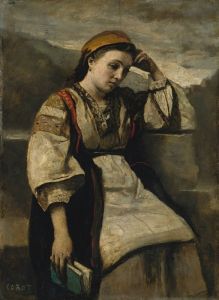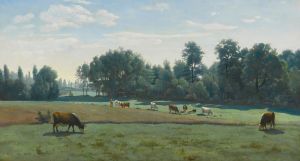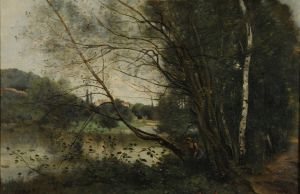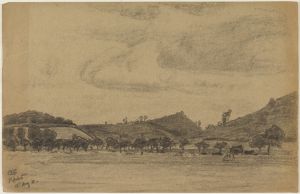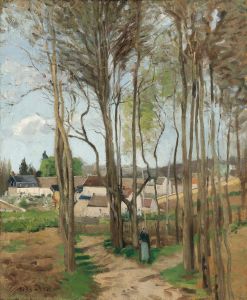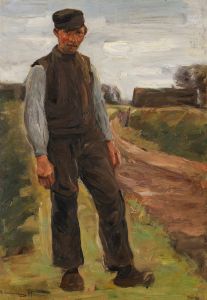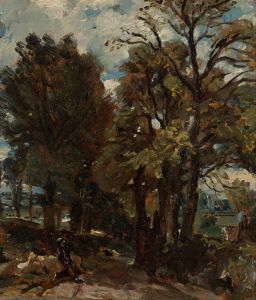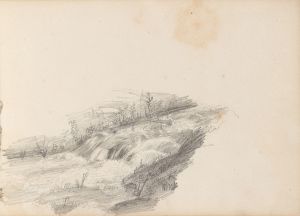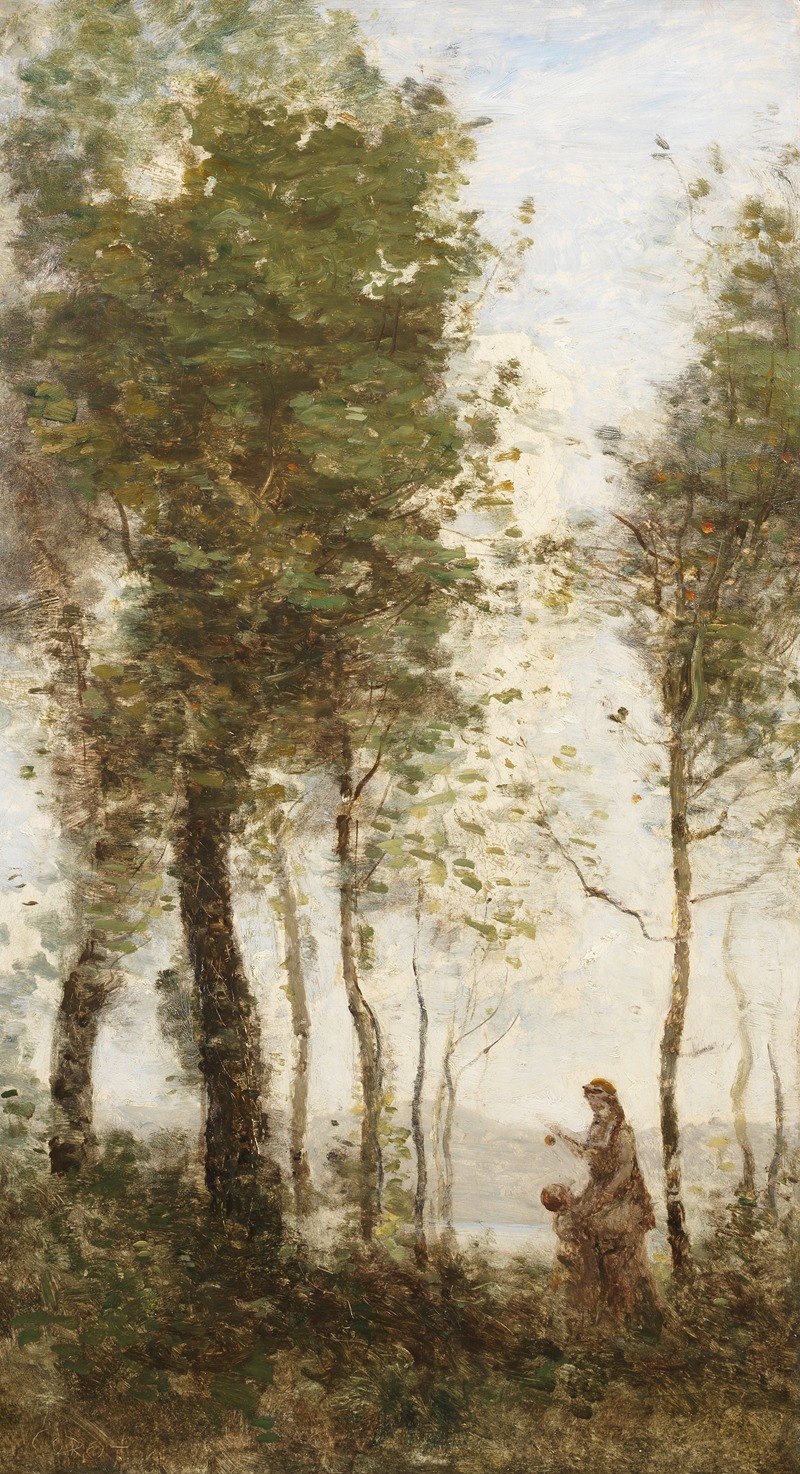
La lisière du bois
A hand-painted replica of Jean-Baptiste-Camille Corot’s masterpiece La lisière du bois, meticulously crafted by professional artists to capture the true essence of the original. Each piece is created with museum-quality canvas and rare mineral pigments, carefully painted by experienced artists with delicate brushstrokes and rich, layered colors to perfectly recreate the texture of the original artwork. Unlike machine-printed reproductions, this hand-painted version brings the painting to life, infused with the artist’s emotions and skill in every stroke. Whether for personal collection or home decoration, it instantly elevates the artistic atmosphere of any space.
Jean-Baptiste-Camille Corot's painting "La lisière du bois" (The Edge of the Forest) is a notable work by the French landscape artist, who is often regarded as a pivotal figure in the transition from traditional Neoclassicism to the more modern Impressionism. Corot, born in 1796 and active until his death in 1875, was known for his ability to capture the subtle nuances of light and atmosphere in his landscapes, and "La lisière du bois" is a fine example of this talent.
The painting depicts a serene and tranquil scene at the edge of a forest, a subject that Corot frequently explored throughout his career. The composition is characterized by its delicate interplay of light and shadow, with the sunlight filtering through the trees and casting dappled patterns on the ground. This effect creates a sense of depth and invites the viewer to step into the peaceful, natural setting.
Corot's technique in "La lisière du bois" showcases his mastery of both detail and broad, expressive brushstrokes. The foliage is rendered with a combination of fine, precise lines and softer, more impressionistic touches, which together create a lifelike texture and a sense of movement. The trees, with their varied shapes and sizes, are depicted with a naturalistic accuracy that reflects Corot's keen observation of nature.
The color palette of the painting is predominantly composed of earthy tones, with greens, browns, and hints of blue and gray. These colors are applied with a subtle gradation, enhancing the overall harmony and balance of the composition. Corot's use of color not only captures the natural beauty of the scene but also conveys a mood of calmness and introspection.
"La lisière du bois" is also notable for its composition, which guides the viewer's eye through the painting in a gentle, meandering path. The placement of the trees and the open spaces between them create a rhythm that is both dynamic and restful. This careful arrangement reflects Corot's deep understanding of the principles of composition and his ability to create a sense of unity within the landscape.
Throughout his career, Corot was influenced by his travels and his studies of the Old Masters, particularly the works of Claude Lorrain and John Constable. These influences are evident in "La lisière du bois," where Corot combines a classical sense of order with a more modern, naturalistic approach to landscape painting.
Corot's work, including "La lisière du bois," had a significant impact on the development of landscape painting in the 19th century. His ability to capture the essence of nature with both precision and emotion inspired many younger artists, including the Impressionists, who admired his innovative techniques and his dedication to painting en plein air (outdoors).
In summary, "La lisière du bois" by Jean-Baptiste-Camille Corot is a masterful representation of the artist's skill in capturing the beauty and tranquility of the natural world. Through his expert use of light, color, and composition, Corot creates a scene that is both realistic and evocative, inviting viewers to experience the serene landscape as if they were standing at the edge of the forest themselves.





